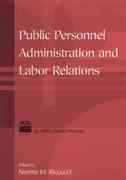Question
Q. Bob must decide whether to submit (S) or not submit (N) his most recent paper to a journal. If he does not submit, both
Q. Bob must decide whether to submit (S) or not submit (N) his most recent paper to a journal. If he does not submit, both he and the editor of the journal receive a payoff of zero. If he submits, the editor of the journal must choose whether to accept (A) or reject (R) the paper. If she rejects the paper, Bob and the editor each receive a payoff of 1. If she accepts, Bob has the choice of either thanking the editor (T) or withdrawing his submission (W). If he thanks her, they both receive a payoff of 2. If he withdraws the paper, Bob receives a payoff of 0 and the editor receives a payoff of 2.
(a) Construct a game tree in order to represent this scenario as a game in the extensive form.
(b) Write down a list of players and, for each player, write down the player's strategy set (i.e. full list of available strategies).
(c) Use backward induction to solve for the SPNE of the gam
Q. Consider the Bertrand price setting game we studied in class. There are two firms that sell homogeneous goods. Each firm chooses a price to compete in the market. Firm 1 has a capacity of q1 = 7 and Firm 2 has a capacity of q2 = 5. Firms split the total demand in the proportion of their capacity if the choose an identical price. The market demand is given by P(q) = 20 q. What prices will be set by each firm in a Nash Equilibrium if
(a) Both firms have a marginal cost of 3?
(b) Both firms have a marginal cost of 12?
Step by Step Solution
There are 3 Steps involved in it
Step: 1

Get Instant Access to Expert-Tailored Solutions
See step-by-step solutions with expert insights and AI powered tools for academic success
Step: 2

Step: 3

Ace Your Homework with AI
Get the answers you need in no time with our AI-driven, step-by-step assistance
Get Started


